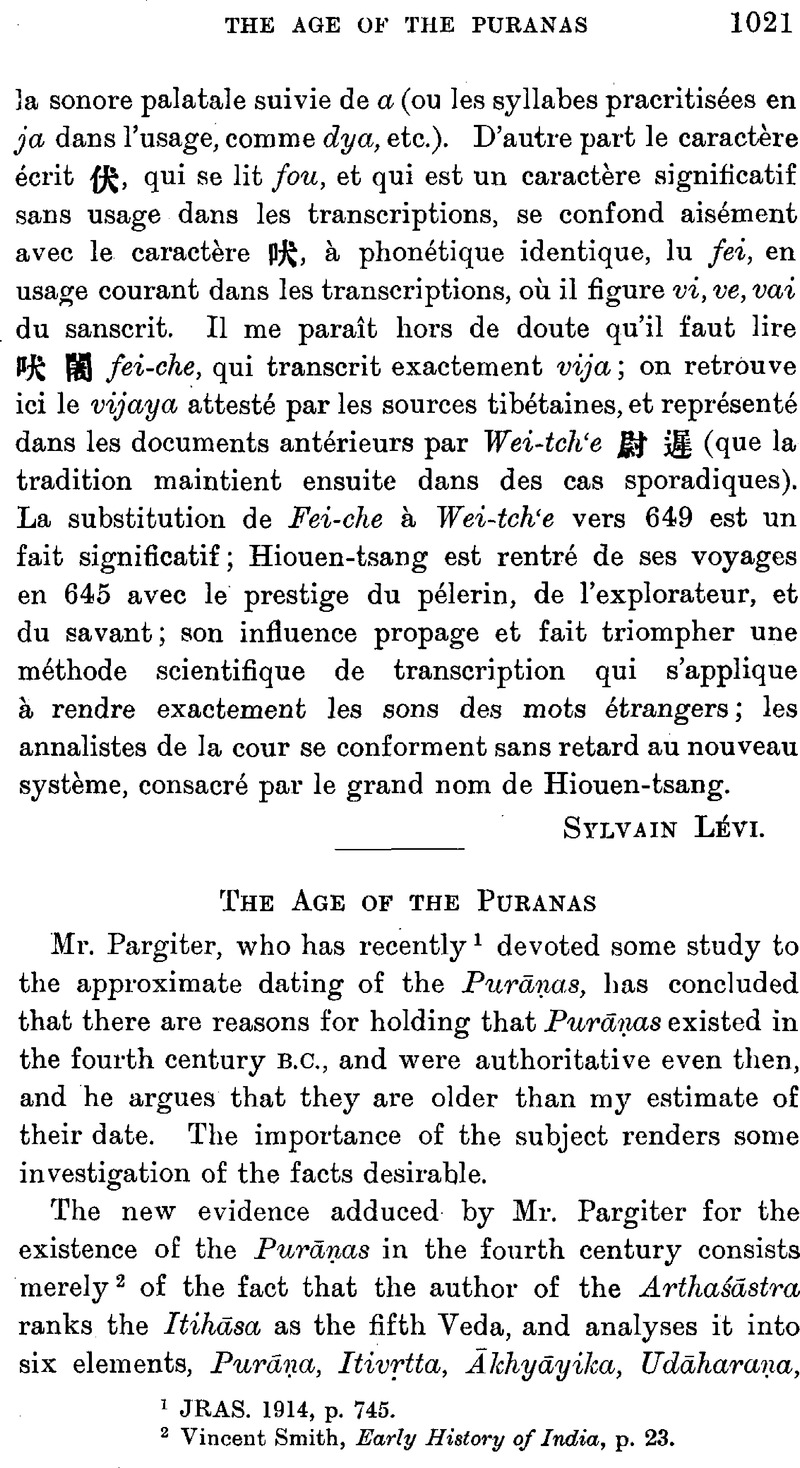No CrossRef data available.
Article contents
The Age of the Purāṇas
Published online by Cambridge University Press: 15 March 2011
Abstract

- Type
- Miscellaneous Communications
- Information
- Copyright
- Copyright © The Royal Asiatic Society 1914
References
page 1021 note 1 JRAS. 1914, p. 745.Google Scholar
page 1021 note 2 Smith, Vincent, Early History of India, p. 23.Google Scholar
page 1022 note 1 Vedic Index, i, 76, 77, 540.Google Scholar See also below as to the important evidence of Āpastamba, not used by Messrs. Pargiter and Vincent Smith.
page 1022 note 2 IA. XXV, 323.
page 1022 note 3 Bombay Gazetteer, I, ii, 162.Google Scholar
page 1024 note 1 Early History of India, pp. 22, 23.Google Scholar
page 1024 note 2 Bühler, , SBE, ii, pp. xxix seq.Google Scholar
page 1024 note 3 p. xiii, n. 1; p. 42, n. 8.
page 1025 note 1 This passage differs from p. 4, 1. 6, and p. 10. 1. 5, in giving the length of the reign, and so is prophetic.
page 1025 note 2 JRAS. 1912, p. 1047.Google Scholar
page 1025 note 3 So Mr. Pargiter's view of 163 years for the Śiśunāgas in place of 360 is not accepted by Smith, Vincent, Early History 3, p. 45.Google Scholar
page 1025 note 4 The Kushan line survived until the fifth century in Kabul and the Saka Satraps until A.D. 388; see Smith, Vincent, op. cit. pp. 274, 292.Google Scholar
page 1026 note 1 Smith, Vincent, op. cit. pp. 310, 410.Google Scholar
page 1026 note 2 Ind. Forsch, xxxi, 198–203.Google Scholar
page 1026 note 3 Op. cit. p. 304.
page 1026 note 4 Mazumdar, , JRAS. 1909, pp. 731 seqq.Google Scholar
page 1026 note 5 Hopkins, , Great Epic of India, p. 475.Google Scholar
page 1026 note 6 Smith, Vincent, op. cit. pp. 328–34Google Scholar; Fleet, , JRAS. 1914, pp. 398–401.Google Scholar
page 1026 note 7 Takakusu, , JRAS. 1905, pp. 44 seqq.Google Scholar; Vidyābhūṣaṇa, Mediaeva School of Indian Logic, pp. 75–6.Google Scholar
page 1027 note 1 p. xvii, n. 2.
page 1027 note 2 See Bühler, , SBE. ii, pp. xxix seqq.Google Scholar
page 1028 note 1 See JRAS. 1914, p. 730.Google Scholar
page 1029 note 1 See e.g. Bühler, , SBE. ii, pp. xliv, xlvGoogle Scholar; Wackernagel, , Altind. Gramm. i, pp. xviii seqq.Google Scholar; Peterson, , JAOS. xxxii, 414–28Google Scholar; Keith, , Aitareya Āraṇyaka, pp. 180, 196Google Scholar; Hopkins, , Great Epic, pp. 261 seqq.Google Scholar
page 1030 note 1 Nirukta, i, 4Google Scholar; Bṛhaddevatā, ii, 90, 91.Google Scholar
page 1030 note 2 See Bühler, , SBE. ii, p. xxxGoogle Scholar; Pargiter, , Dynasties, p. xvii, n. 2.Google Scholar
page 1031 note 1 I take this opportunity to correct Mr. Pargiter's complete misunderstanding (JRAS. 1914, p. 743)Google Scholar of my statement that the Vedic texts are not books of historic purpose; that phrase merely means, as I think must be plain, that they do not deal with history; their historic context is incidental and in my view of infinitely greater value than the pseudo-history of the epic and Purāṇa texts.


